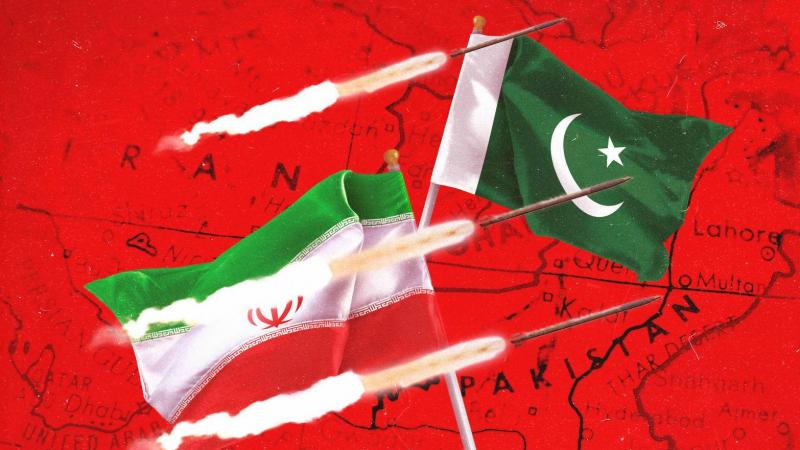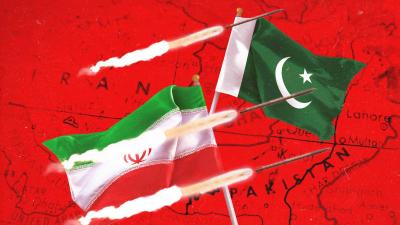Concerns about instability in the Middle East are escalating following the mutual rocket strikes between Iran and Pakistan. The region has been experiencing conflict for over three months, fueled by the war that began between Israel and Hamas, which subsequently saw Iran's allies in Lebanon, Syria, Iraq, and Yemen entering the fray. On Tuesday, Iran announced that it targeted bases of "militants connected to Israel" within Pakistan. The two targeted groups belong to the Baloch, but it remains unclear if there is any cooperation between them.
However, Pakistan reported that civilians were injured and two children were killed, warning that there would be consequences for which Tehran would bear responsibility. Pakistan's response came on Thursday with strikes inside Iran aimed at separatist militants from the Baloch. Iranian media reported that several rockets struck a village in the Sistan and Baluchestan province bordering Pakistan, resulting in at least nine fatalities. Earlier reports indicated that three women and four children were killed, all of whom were not Iranian.
Relations between Pakistan and Iran have been tense in the past, but these strikes are unprecedented as they are the most extensive cross-border actions in recent years. Some observers believe this tension could spark a new regional war, increasing tensions in the Middle East, while others downplay that possibility.
In less than three days, both Iran and Pakistan exchanged rocket strikes targeting "terrorist groups" and "separatist organizations," according to official statements from Tehran and Islamabad. With these questions in mind, here’s a comparison of the military strength of Iran and Pakistan, and whether it is sufficient to serve as a deterrent against large-scale military conflict.
Pakistan ranks ninth in the Global Firepower Index for the strongest armies in the world, while Iran is fourteenth in the same index. Iran's defense budget of $9.95 billion surpasses Pakistan's, which allocated a defense budget of $6.34 billion.
**Ground Forces**
Pakistan has a stronger ground forces arsenal with 3,742 tanks compared to Iran's 1,996 tanks. Additionally, when it comes to self-propelled and towed artillery, Pakistan has larger numbers. However, Iran possesses more armored vehicles (65,765) than Pakistan (50,523) and also has more mobile rocket launch platforms—775 compared to Pakistan's 602. The active duty personnel of the Pakistan Armed Forces is approximately 650,000, with 550,000 in reserves, while the Iranian Armed Forces are the largest in the Middle East in terms of active personnel, with around 610,000 active members and 350,000 trained reservists ready for mobilization.
**Naval Power**
The Iranian navy is relatively modest, lacking an aircraft carrier or any destroyers. According to the Global Firepower Index, Pakistan has a fleet of 114 ships while Iran has 101 ships. Notably, neither country has aircraft carriers, but Pakistan outperforms Iran in terms of destroyers, possessing two compared to none for Iran, as well as frigates (9 to 7) and cruisers (7 to 3).
**Air Power**
The Iranian Air Force consists of a total of 551 aircraft, including 186 fighter jets, 23 dedicated attack aircraft, 129 helicopters, and 10 special mission aircraft. In contrast, Pakistan has 1,434 aircraft, including 387 fighter jets such as F-16s, 90 dedicated aircraft, 352 helicopters, and 25 special mission aircraft. Iran also possesses a complete arsenal of drones and the Iranian Revolutionary Guard has an electronic warfare unit known for conducting many attacks abroad.
**Missile and Nuclear Power**
In terms of nuclear capability, Pakistan is clearly superior, according to a report by the Stockholm International Peace Research Institute, possessing 170 nuclear weapons, making it the sixth largest nuclear arsenal in the world. Conversely, Iran does not openly possess nuclear weapons, despite Western reports suggesting Tehran is nearing the development of a nuclear bomb. Iran has a ballistic missile program but lacks intercontinental ballistic missiles. Iran has nearly 1,000 strategic missiles believed to be capable of striking throughout the Gulf and beyond, having also produced intermediate-range ballistic missiles with ranges between 1,000 and 2,400 kilometers. On the other hand, Pakistan has a missile program that includes short and medium-range missiles with ranges up to 2,000 kilometers.




